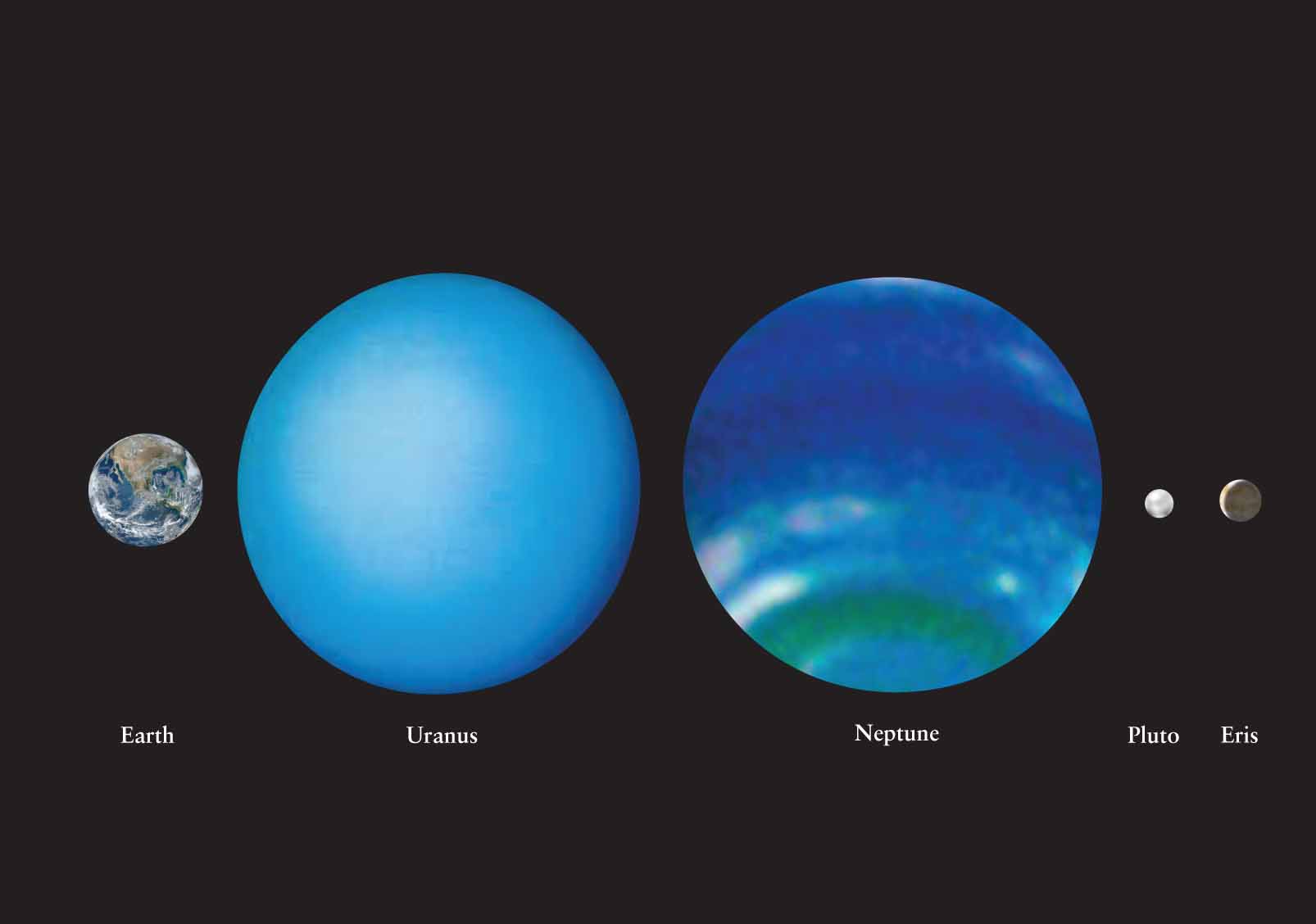379
CHAPTER
14

Earth, Uranus, Neptune, Pluto, and Eris to scale.
Uranus, Neptune, Pluto, and the Kuiper Belt: Remote Worlds
LEARNING GOALS
By reading the sections of this chapter, you will learn
| 14–1 | How Uranus and Neptune were discovered |
| 14–2 | The unusual properties of the orbit and atmosphere of Uranus |
| 14–3 | What gives Neptune’s clouds and atmosphere their distinctive appearance |
| 14–4 | The internal structures of Uranus and Neptune |
| 14–5 | The unique orientations of the magnetic fields of Uranus and Neptune |
| 14–6 | Why the rings of Uranus and Neptune are hard to see |
| 14–7 | What Uranus’s larger moons tell us about the planet’s history |
| 14–8 | Why Neptune’s satellite Triton is destined to be torn apart |
| 14–9 | How Pluto came to be discovered |
| 14–10 | Why Pluto is no longer classified as a planet |
Beyond Saturn, in the cold, dark recesses of the solar system, orbit three worlds that have long been shrouded in mystery. These worlds—Uranus, Neptune, and Pluto (all shown here to the same scale as Earth)—are so distant, so dimly lit by the Sun, and so slow in their motion against the stars that they were unknown to ancient astronomers and were discovered only after the invention of the telescope. Even then, little was known about Uranus and Neptune until Voyager 2 flew past these planets during the 1980s.
Surrounded by a system of small moons and thin, dark rings, Uranus is tipped on its side so that its axis of rotation lies nearly in its orbital plane. This remarkable orientation suggests that Uranus may have been the victim of a staggering impact by a massive planetesimal. Neptune is, at first glance, a denser, more massive version of Uranus, but it is a far more active world. It has an internal energy source that Uranus seemingly lacks, as well as atmospheric bands and storm activity resembling those on Jupiter.
Neptune also has dark rings, small, icy moons, and an intriguing large satellite, Triton, which is nearly devoid of impact craters and has geysers that squirt nitrogen-rich vapors. Triton’s retrograde orbit suggests that this strange world may have been gravitationally captured by Neptune.
Close cousins of Triton are Pluto and thousands of other trans-Neptunian objects, among the most remote members of the solar system. These objects harbor many mysteries, in part because they have not yet been visited by spacecraft.
380